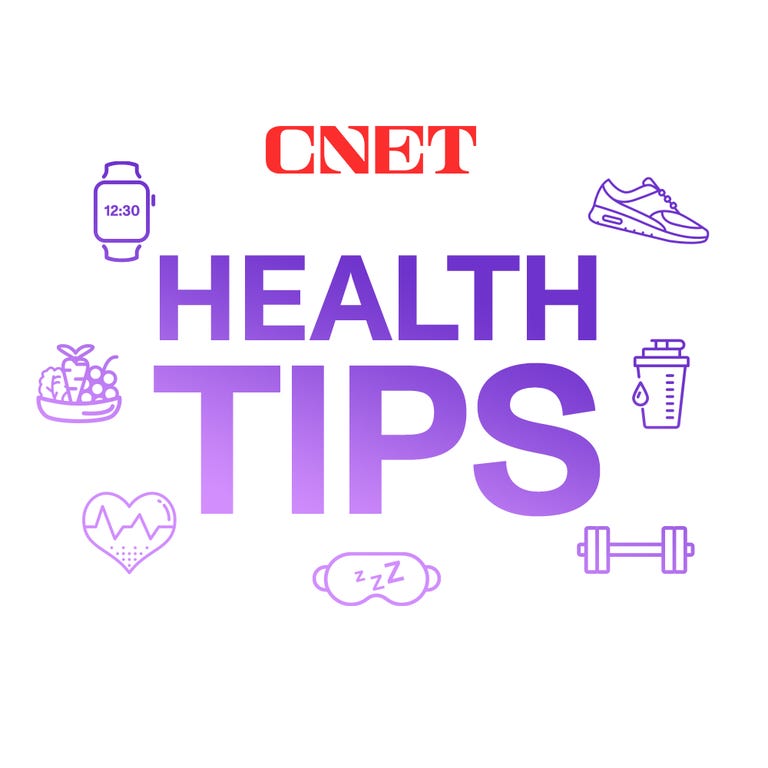Vision loss is a major problem that interrupts daily life. It’s also more common than you think. The US Centers for Disease Control and Prevention estimates that 93 million adults in the US are at high risk of vision loss. While you can’t always restore the vision loss you’ve experienced, it doesn’t mean you can’t take precautions to protect your eyes going forward.
By adding these habits to your routine, you’ll keep your eyes in good shape for the years ahead.
Read more: 12 Best Foods for Eye Health

Want more health tips? Check out why omega-3-rich foods offer benefits for your health, why your glasses get foggy and how to stop it and the right color of sunglasses for eye health.
1. Wear sunglasses
Exposing your eyes to ultraviolet rays may cause damage over time. Wearing sunglasses can block harmful UV light, lowering your risk of eye diseases like cataracts, sunburn, eye cancer and growths around the eye, per the American Academy of Ophthalmology. Polarized glasses with smoke or gray lenses may offer the best protection against the sun’s rays and reduce glare.
2. Take screen breaks
Prolonged screen time can cause dry eyes, pain in the neck and shoulders, blurred vision, headaches and digital eye strain, or computer vision syndrome. The American Optometric Association recommends using the 20-20-20 rule to prevent computer vision syndrome. Every 20 minutes, look at something at least 20 feet away for 20 seconds.
3. Take book breaks, too
Screen time isn’t the only way to strain your eyes. When you read a book, you probably hold it up close for long periods, too. Both activities can lead to nearsightedness, or myopia, which means far-away objects are blurry while up-close things are clear. Just like you should use the 20-20-20 rule to take screen breaks, you should also use this rule for book breaks. If you find yourself engrossed in what you’re reading or doing on the computer, set an alarm so you don’t miss your 20-minute break.

4. Move your body
Regular exercise can provide eye health benefits, such as promoting healthy blood vessels and lowering your risk of developing glaucoma and diabetic retinopathy, the AAO reports. The CDC recommends at least 150 minutes of moderate aerobic activity every week, plus two days of strength training for your muscles. You can also practice eye exercises to reduce tension and eye strain while sitting at your desk.
Read more: Sneak More Exercise Into Your Daily Routine: 7 Steps That Actually Work
5. Get outside
Children and adults need to get outside often, even if you get your recommended exercise indoors. Research shows that children who spend time outdoors have a lower risk of developing nearsightedness in adolescence and as adults. Playing with your kids at the local playground, walking through the woods or even playing in the backyard can help the whole family stay healthy and active. Be sure to use your sunglasses.
6. Don’t smoke
It’s well known that smoking is bad for your health. It can also increase your risk of developing eye diseases like cataracts or age-related macular degeneration, according to the Food and Drug Administration. Smokers have a two or three-times higher chance of developing cataracts and up to four times higher risk for AMD. Future research may determine if smoking cigarettes can also cause glaucoma, Graves’ eye disease, thyroid eye disease and encourage diabetic retinopathy onset or progression. To improve your health, build a quit plan.

7. Eat balanced meals
The foods you eat every day can improve your eye health. Eating foods rich in vitamins A, C and E, beta-carotene, omega-3 fatty acids, lutein, zeaxanthin and zinc can help cellular growth, lower eye tissue inflammation and limit free radicals that can damage your eyes.
To get the right nutrients for your eyes, eat balanced meals by including some of these foods in your regular diet, as recommended by the AAO:
- Vitamin A and beta-carotene: Apricots, carrots, cantaloupe, sweet potatoes, red pepper, ricotta cheese, mango.
- Vitamin C: Grapefruit, oranges, lemons, tangerines, peaches, strawberries, tomatoes, red bell pepper.
- Vitamin E: Avocados, almonds, peanut butter, wheat germ, sunflower seeds.
- Omega-3: Halibut, sardines, salmon, tuna, trout.
- Lutein and Zeaxanthin: Collards, broccoli, eggs, peas, kale, spinach, romaine lettuce, turnip greens.
- Zinc: Lima beans, kidney beans, black-eyed peas, lean red meats, oysters, fortified cereals, poultry.
8. Avoid rubbing your eyes
If you habitually rub your eyes, it could cause eye damage or infections. Dry eyes and eye strain can make you want to rub your eyes, and some may rub them too much or too hard. This can lead to issues such as reduced or blurry vision, headaches, inflammation, eye and light sensitivity. Another reason to avoid eye rubbing is that bacteria or viruses on your fingers or hands could lead to conjunctivitis, commonly called pink eye. Instead of rubbing your eyes, use eye drops or saline to clean your eyes and keep them moist. Resist the urge and find something else to keep your hands busy until you undo the habit.
Read more: 7 Home Remedies for Dry, Itchy Eyes
9. Wash your hands
You should always wash your hands before touching your face or eyes and handling contact lenses. Almost 45 million Americans wear contact lenses and around one in three wearers develop complications, with one in five infections from contact lenses causing corneal damage.
Plus, there’s no telling what kind of germs are on objects you touch after someone unknowingly contaminated them. Washing your hands regularly can lower your risk of respiratory illness by up to 21% and diarrheal illness by up to 40%, the CDC reports.
10. Take off your makeup
After a long day, the last thing you might think about is removing your eye makeup before you get into bed. Doing so benefits your eye health and can lower your risk of blepharitis or eyelid inflammation, according to the Optometrists Network.
You should also adopt good makeup practices that can save your skin and eyes, such as only using products made for eyes, replacing your makeup often (especially after an eye infection), not applying eye makeup in the inner lids and never sharing eye makeup with someone else. If you use brushes or sponges to apply eye makeup, wash them regularly.




















+ There are no comments
Add yours